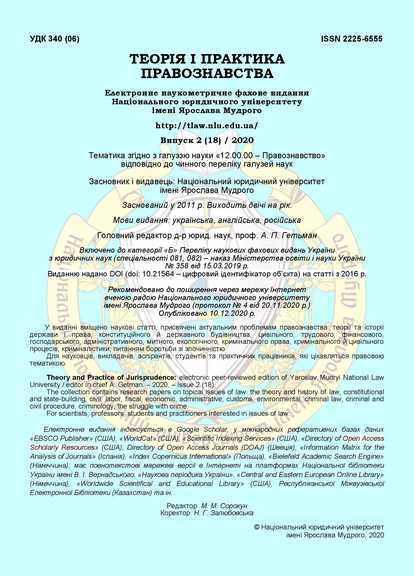Тактико-психологічні особливості нейтралізації свідомої неправди в показаннях
Tactical and psychological features of counteracting the perjury
Author(s): Natalia Viktorivna PavliukSubject(s): Law, Constitution, Jurisprudence, Criminal Law
Published by: Національний юридичний університет імені Ярослава Мудрого
Keywords: interrogation; false testimony; tactical options; computer model; crime scene simulation;
Summary/Abstract: The paper deals with the psychological basis of giving false testimony by the person questioned. It is stated that the motives for making a false statement by the suspect are related to the desire to avoid responsibility for the crime, to reduce the guilt, or to be punished not for the crime committed but for a less serious crime. Witnesses’ false testimony is due to fears of the suspect’s desire for retaliation; unwillingness to further participating in investigative (search) activities and the investigation as a whole. The motives for giving false testimony by victims are as follows: the desire to reduce the damage caused by the crime in order to hide the source of the acquisition of lost property; the desire to exaggerate the damage caused by the crime, both out of feelings of revenge and for mercenary or other motives; attempts to hide their own dishonest actions, immoral behaviour.Attention is paid to the resources of current scientific and technical means, innovative products and their use during interrogation. It is noted that the up-to-date technical and technological resources of computer modeling make it possible to turn a verbal description of the mental image of an object or event stored in the human mind, in a directly observable three-dimensional, dynamic, space-oriented model of this image with great accuracy and unlimited potential of digitalization.The author concludes that the visualized 3D model of the crime scene can be used during the interrogation not only to ensure the completeness and accuracy of recording the reported information. In case of a conflict situation during the interrogation of a person giving intentionally false testimony, presenting a 3D model of the crime scene with visualized paths of objects motion, the location of the participants of the event can also serve as a tactical option, which we could refer to as "visual imitation of a crime”, it involves refuting each false testimony by specific evidence.The paper presents the system of tactical options aimed at counteracting the perjury: 1) asking questions; application of “the element of surprise”; 2) maximum itemization of testimony; 3) presentation of counter-evidence; combination of forced (accelerated) and slow rate interrogation; 4) telling investigators versions of the crimes committed or the probable development of events; 5) “dragging the person questioned into an argument”; 6) using or generating the state of emotional tension; 7) "assumption of a legend"; 8) "inertia"; 9) visual imitation of the crime
Journal: Теорія і практика правознавства
- Issue Year: 2/2020
- Issue No: 18
- Page Range: 1-10
- Page Count: 10
- Language: Ukrainian

